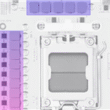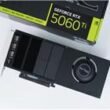NVIDIA: Dominating the AI Market with an Unparalleled Competitive Edge
Summary
- NVIDIA’s Dominance: A closer look at NVIDIA’s market leadership in AI, highlighted by their market value and technological superiority.
- AI Infrastructure: The crucial role of NVIDIA’s AI GPUs for tech giants, despite competitors attempting to develop alternative chips.
- Systemic Advantages: Understanding NVIDIA’s moat through their comprehensive AI ecosystem, rather than just hardware.
NVIDIA has emerged as a formidable player in the AI landscape, illuminating the field with its innovative solutions and unparalleled market valuation. Recent insights underscore the company’s trajectory towards becoming the first-ever entity with a staggering market value approaching $5 trillion. This growth is not merely a consequence of luck; it is a reflection of the strategic positioning NVIDIA holds within the artificial intelligence industry.
The significance of AI cannot be overstated. Major technology firms are relentlessly investing in building robust AI infrastructures, and central to this endeavor is NVIDIA’s advanced AI Graphics Processing Units (GPUs). While these companies are ramping up their own ventures into AI chip development, they remain dependent on NVIDIA’s offerings. Their reliance stems from concerns that NVIDIA could withdraw its support, creating a dilemma for those attempting to break free from dependency on NVIDIA’s pivotal technology.
Unpacking NVIDIA’s Competitive Moat
A prevailing question arises: What constitutes NVIDIA’s formidable moat in the AI market? Many industry observers instinctively point to the widely adopted CUDA ecosystem—an integral framework utilized by numerous developers. However, NVIDIA’s CEO Jensen Huang emphasizes that this is not the fundamental factor behind the company’s competitive advantage.
In a recent interview, Huang articulated that NVIDIA’s true strength lies in its comprehensive AI factory concept rather than the mere crafting of superior chips. This perspective reveals a nuanced understanding of industry dynamics. He noted, “Even if competitors don’t have financial backing, they still cannot outpace NVIDIA because our system excels in total cost of ownership (TCO).”
Huang elaborated that while rivals may be focused on optimizing chip design, NVIDIA’s vision extends far beyond that. The company is constructing an entire AI ecosystem—what Huang refers to as an “AI factory.” This encompasses not only high-performance GPUs but also essential infrastructure components such as the NVLink interconnect, Spectrum-X communication technology, and the comprehensive CUDA software stack.
Why Performance Matters
The implications of Huang’s vision are profound. Even if a competitor offers chips for free, if an NVIDIA solution provides double the performance, businesses will invariably generate greater revenue with NVIDIA’s offerings. This creates an irresistible value proposition that makes customer retention a significant competitive lever.
Huang’s assertions demonstrate a shift in the landscape of competition. Merely creating a better GPU or specialized ASIC chip is insufficient; a holistic approach is necessary for success in this highly competitive domain. Competing entities appear to be lagging in comprehending this broader strategic viewpoint, as indicated by Huang’s long-standing emphasis on systemic advantages that extend beyond hardware specifications.
Long-Term Industry Insights
Interestingly, Huang has maintained this stance for over a year, indicating that while competitors may grasp the notion of systemic advantages, they have struggled to implement this understanding effectively. As the AI race intensifies, the urgency for tech companies to reassess their strategic approaches becomes increasingly clear.
In conclusion, NVIDIA’s enduring dominance in the AI market can largely be attributed to their sophisticated ecosystem, characterized by both robust hardware and an integrated approach to software and infrastructure. As other companies scramble to catch up, NVIDIA’s establishment of a complete AI factory allows it to stay not only ahead of the competition but also to redefine the very parameters for success in the AI space.
The future of AI is undoubtedly bright for NVIDIA, but the question remains: will competitors finally recognize the importance of these systemic advantages and pivot their strategies before it’s too late? The race for AI supremacy showcases the complexities of technological innovation, revealing that true leadership requires much more than advanced components; it necessitates a visionary perspective towards creating comprehensive solutions that can dominate in a challenging market landscape.







